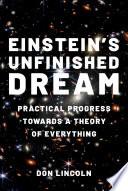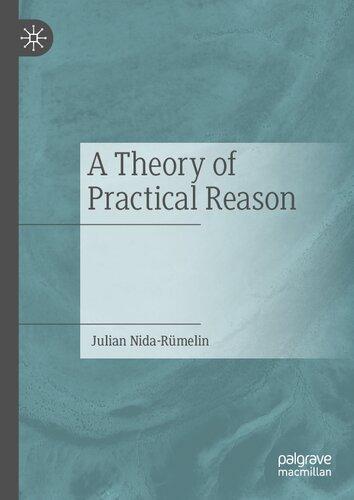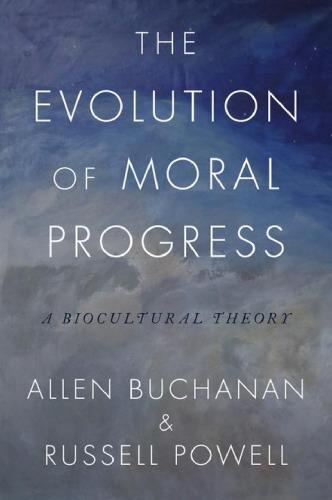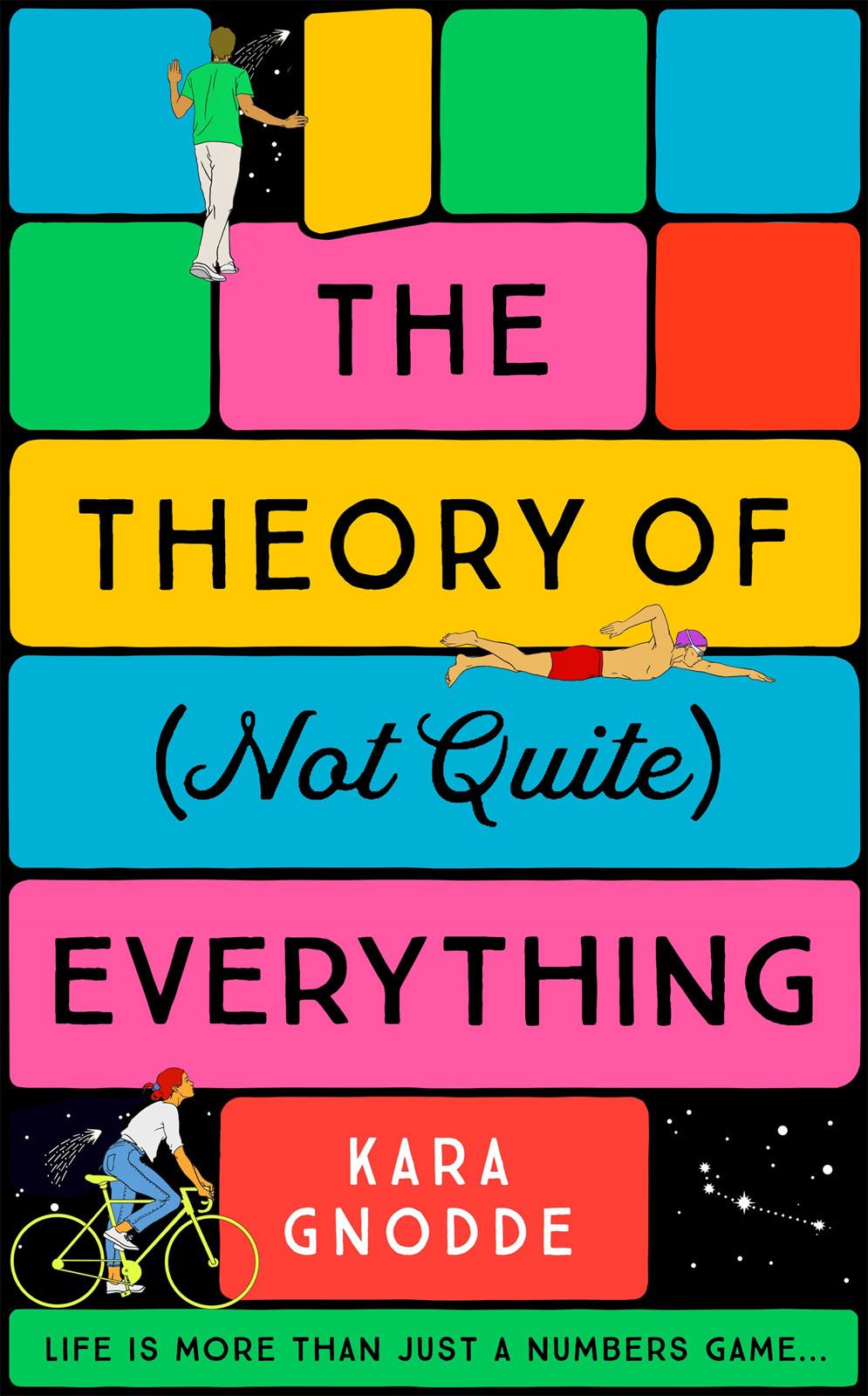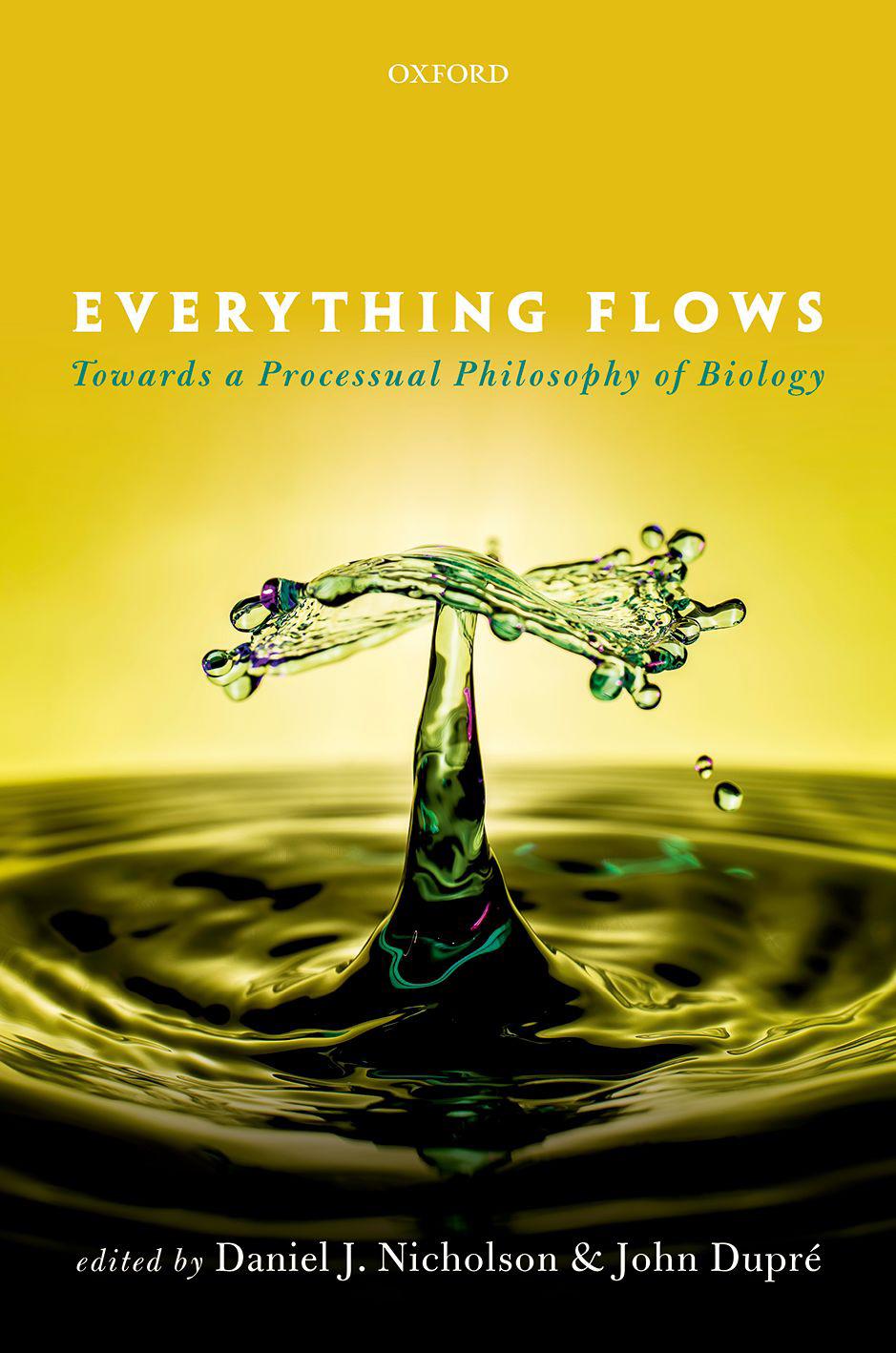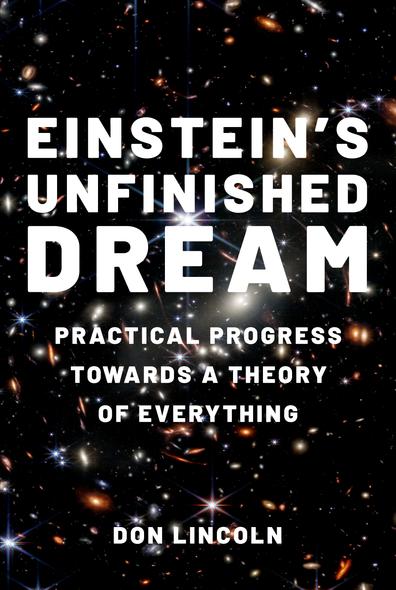FOREWORD
WhenI was just a teen, I was fascinated by what one might call “big questions,” ancient questions of life and death and existence. These are topics that have historically been the province of theology and philosophy. However, over the centuries, the juggernaut that we call the scientific method has turned its attention to this subject matter and taken the lead in answering these timeless mysteries.
So, in spite of an unsavory early dalliance with philosophy (hey, I was young, and everyone experimented back in those days), I became a scientist. I wanted to know the answer to such questions as how the universe came into existence or why the laws of nature are the way they are, and it was clear that the study of science was the only credible path forward.
As I grew older, I came to realize that I was not the first scienceminded individual to have a similar interest. Indeed, Einstein spent the latter half of his career devoted to studying the same questions. Scientists even have a single proposed name for the answer to all of those puzzles—we call it a “theory of everything.”
The name is grand, and it suits the goal. Physicists aspire to develop a theory that literally answers all questions. (Well, ones dealing with the nature of reality at least. Nobody really expects to understand perplexing mysteries like why people put ketchup on hotdogs. But I digress.) Unlike the answer to most questions, which inevitably generates another “but why is that?” question, a
proper theory of everything will allow no further questions. The theory will be self-evident.
Admittedly, we cannot be sure that a theory of everything exists. But it is a lovely goal and people will continue to strive for it. Indeed, there are some people who claim that a well-developed theory of everything is right around the corner—something that we can hope to see published in the next few years or decades.
And that’s what this book is about. I have spent my professional life doing physics research at the very cutting edge of what we know—venturing from the shores of the known, out into the oceans of our ignorance. Thus, I have some familiarity with the subject matter and some experience with the pace at which discoveries are made.
It is my opinion that rather than being in the position where the announcement of a correct theory of everything is imminent, we are in the situation where we still have a long way to go. Perhaps this could be viewed as an attempt to pour cold water on the enthusiasm that drives an entire field of scientific inquiry, but I prefer to think of it as adding a dose of reality to the conversation. I think it is important to have a clear vision as we move forward.
In this book, I will tell you about our current theoretical understanding of the laws of the universe. Two very successful theories—the standard model that describes the quantum world and Einstein’s theory of general relativity that governs the cosmos—give us an enormously comprehensive understanding of the laws of reality. Together, they truly are a triumph of scientific achievement.
However, the two models are incomplete, so I then turn my attention to recent and ongoing attempts to extend our current knowledge and develop a theory of everything. These attempts
span a century of hard work by brilliant minds and, sadly, none have been successful. I will then explain why current attempts to devise a theory of everything are doomed to failure—scientific hubris, writ large.
While this might seem to be a depressing place to arrive at the midpoint of a book, this is a hasty characterization. I can say this because professional researchers know, in broad strokes, how to move ahead. The universe has shared with us breadcrumbs that mark a trail forward. In fact, there are many trails that lay before us, and following each of them will bring us closer and closer to our goal. This book will describe in real and concrete detail the mysteries that lie ahead and present the myriad of solutions that might bring a theory of everything closer to reality.
In short, this book gives you a real insight into the true status of the ultimate explorations of the laws of nature. And, when you reach the end, you will have a deep appreciation of the research frontier that will occupy the professional scientific community for the next few decades.
Of course, I cannot take credit for the information found in these pages. No single person or even groups of people can. Indeed, the path toward a theory of everything is possible because of the tireless efforts of thousands of men and women, past, present, and future, who have devoted their lives to studying the universe’s mysteries. I tip my hat to each and every one of them.
I would like to thank my family, who gave me the time and space to pen these words and share with you this most gripping tale. And I must certainly thank the people who read early drafts of this manuscript. This book has been immeasurably improved by the comments of Cherie Bornhorst, Keith Calkins, Mike Fetsko, Jeff Funkhouser, Eduardo Márquez, Kevin Martz, Dee Dee Messer,
Rebecca Messer, Frank Norton, Mike Plucinski, Rebekah Randall, and Susan Wetzler. I remain in their debt.
Finally, I would like to thank you, the reader. I hope that you will find the journey as exciting as I do, and you will come to understand how science will move forward so we will one day know the answers to the grandest questions of all.
GOD’S THOUGHTS
In1922, a young woman by the name of Esther Polianowski came to Berlin. Born at the turn of the century in Zhytomyr, Ukraine, she left her homeland in 1919 to escape civil war and the persecution of Jews that was common at that time. Following a series of harrowing and dangerous adventures, she joined a group of pioneers in Palestine. After a brief return to the Ukraine to help her widowed mother and siblings escape to live in safety with her pioneer friends, Esther decided to go to Germany to pursue her dream, which was the study of physics.
The 1920s in Germany was an exciting time for a physics student. The development of quantum mechanics beckoned on the horizon, and the discussions in university seminars were both interesting and passionate. Ms. Polianowski first met Albert Einstein when she entered the University of Berlin, but she began to see more of him when she became a third-year student.
In 1925, the rising antisemitism in Germany began to trouble her and she went to talk to Einstein at his house, to seek his advice. They went for a walk, where he suggested perhaps going to Holland to study and, when she said she could not afford to go there, he suggested that she go to England to work at the Cavendish Laboratory at the University of Cambridge.
Einstein’s Unfinished Dream. Don Lincoln, Oxford University Press. © Oxford University Press 2023. DOI: 10.1093/oso/9780197638033.003.0001
She eventually took his advice, but it is her account of that leisurely stroll that gave us what was perhaps one of Einstein’s most poetic phrases. Shortly after Einstein’s death in 1955, she published this account under her married name of Esther Salaman in The Listener, a weekly magazine published by the BBC.
Their conversation ranged far and wide, from his most recent efforts to unify the theories of electromagnetism and gravity, to German and Russian literature, from Dostoevsky to Goethe and Faust. They spoke of philosophy and Einstein’s opinion of the discipline’s insubstantial contribution to science.
But it was when Esther expressed an interest in learning French, so she could read French literature as it had been written, that Einstein revealed his deepest goals as a scientist and great thinker. He dismissed traveling to France, because he wasn’t much of a people person. His interests were mostly about his research— his desire to understand the rules of the universe. He said, “I want my peace. I want to know how God created this world. I’m not interested in this or that phenomenon, in the spectrum of this or that element. I want to know His thoughts; the rest are details.”
Now, that phrase, “God’s thoughts,” was never meant to be taken literally as in a literal deity with literal thoughts about an initial explicit intent for the inner workings of the universe and how the cosmos came into existence. Einstein didn’t believe in that kind of god. Instead, he believed in nature and the majestic natural processes that govern it. Although he often spoke in a way that could be interpreted as being religious, he was a strict scientist who believed that it was possible to understand the laws of nature.
“God’s thoughts” should be considered a beautiful metaphor, one which anyone can appreciate—even the most adamant atheist.
The phrase should be understood in the way it was intended, which is that Einstein wasn’t interested in petty minutia, such as why some elements conducted electricity, while others don’t. He wanted to understand much deeper questions. He wanted to understand just why the universe is the way it is. He was talking about the most fundamental underlying rules from which all other rules derive.
And this grand goal brings us to why you’re reading this book. The phenomenon which Einstein called “God’s thoughts” has a modern name, although admittedly one with a far less poetic flair. Modern scientists instead talk about an ultimate theory— one which can answer all questions. And, avoiding the whimsy of modern physics, which talks of quarks and color and flavor, scientists call this ultimate goal of science “a theory of everything,” or TOE. You might have heard of another, similar phrase, a grand unified theory, or GUT. The two ideas are quite different, and we’ll eventually learn about the distinction.
What is a theory of everything? It is, quite literally, a theory of everything—a theory which hopes to explain all phenomena— everything. So just how do scientists imagine such a theory might look?
Well, the first thing is that the theory must be simple. Note that I don’t mean simple as in being so easy that everyone can easily understand it. That would run in direct conflict with our experience, where ideas like quantum mechanics, relativity, and E = mc2 are all a bit mind-bending. No, I mean something else by the word “simple.” I mean that ultimately and at the deepest and most fundamental level, the universe is constructed of just a few building blocks (and maybe only one). Building blocks that don’t interact would result in a very boring cosmos indeed, and we know that we
don’t live in such a universe. In our world, objects interact with one another by what appears to be a variety of forces.
But we have learned that phenomena that look quite different can have a common origin, much like we know that zebras and humans both arose from a common ancestor. Lightning and the seemingly unrelated behavior of a compass can both be explained by a single theory.
Now you may have heard that scientists believe that a theory of everything is out there, waiting to be found. But you might not have understood exactly why it seems so evident to researchers that the universe has a simple set of rules that govern it. So let’s talk about a handful of seemingly very different phenomena and try to dig down to their ultimate explanations. We’ll pick five: a fizzy soda, a kitten, a volcano, an orbiting planet, and a supernova. These five phenomena appear to be very, very different, but we shall see that they all have common origins when you delve deeply enough.
To pursue this goal, we must channel our inner two-year-old. Every answer must be met by the question “why?” By doing so, we will dig down through layer upon layer of cause and effect, hopefully finding a final origin that has no cause and, therefore, no further “why?” questions are required. So let’s begin.
Why is a soda fizzy? Well, it’s fizzy because it’s liquid, and it contains carbon dioxide gas suspended in it. So there are two phenomena: the phenomenon of liquid and the phenomenon of gas. Why is the carbon dioxide gaseous at room temperature and yet the surrounding water is liquid? To answer that, you need to invoke the properties of molecules—the molecules of carbon dioxide and water. Water molecules are bent and look a little like a “V.” In contrast, carbon dioxide is straight, more like the letter
“I.” This, and the details of the bonds connecting the atoms in the respective molecules, gives the two substances different properties. Water molecules are said to be polar, which leads to many of water’s unique properties. In contrast, carbon dioxide is not polar. Taking all of these factors into account, water is liquid and carbon dioxide is gaseous at temperatures comfortable to humans.
In the examples we are exploring, I will not talk in detail about the relevant phenomena. While fascinating, it would derail the main point, which is to get at the ultimate causes. So, rather than talking about the finer nuances of these molecules, we might ask, “What is it that gives the molecules these properties?” The answer is, of course, the atoms of which the molecules are composed.
Carbon dioxide is made of carbon and oxygen, while water is made of hydrogen and oxygen. The atoms of each of these elements are composed of an atomic nucleus, surrounded by electrons. Carbon hosts six electrons, oxygen eight, and hydrogen only one. The electrons are bound to the atomic nuclei governed by the force of electromagnetism, which provides a force of attraction between nuclei and electrons. And the way in which the electrons and nucleus interact is governed by the principles of quantum mechanics. Thus, the next question becomes “Why is electromagnetism the way it is, and why does quantum mechanics work the way it does?” Restricting ourselves to the phenomena we can investigate by studying fizzy soda, we can’t really answer those questions; but we can say with some confidence that electromagnetism and quantum mechanics are important components of what Einstein so poetically called “God’s thoughts.”
So let’s now turn our attention to kittens. Kittens really seem to be about as different from fizzy soda as you can imagine, unless you include kitten burps (which I’m not even sure is really a
thing). But what questions can you ask about kittens? Well, you might ask, “Why they are fuzzy?” The answer for that is easy: It’s to keep them warm. Channeling our inner toddler, we can ask, “Why do they need to be warm?” And the answer to that is that having a stable temperature allows them to regulate their metabolism. The reason they need to have a controlled metabolism is because it allows their life to go on. Too slow a metabolism and a kitten would barely be able to move—a tiny torpid tiger, so to speak. Metabolizing too quickly means that the kitten’s energy comes out all at once and it would spontaneously combust. So measured and controlled metabolism is key.
So what controls the metabolism? Chemistry. Very, very, complex chemistry. And what governs chemistry? Molecules and atoms. And, with that, we have returned to the same place we arrived as we considered fizzy soda. The reason that kittens can exist also boils down to the laws of electromagnetism and quantum mechanics.
So is that it? Is the answer to why the universe is the way it is just a matter of electromagnetism and quantum mechanics? It’s certainly a piece of the story, but there’s more.
To expand our list of fundamental origins, let’s talk about a volcano. Certainly, a volcano is quite different from both a fizzy soda and a kitten, but it has some commonalities. A volcano emits lava, which is molten rock. Molten rock is liquid, like the water in the fizzy soda. Rock has a different chemistry than the type we’ve discussed already, but rock is also made ultimately of atoms with their quantum and electromagnetic rules. But there’s another facet here that those two principles don’t explain. Why is the rock hot?
The Earth was hot when it formed through the bombardment of small, asteroid-like bodies. Slam two things together hard enough
and they’ll get hot. (Don’t believe me? Take a hammer and continuously hit a rock for five minutes and then feel the hammer. What do you get? A hot hammer.)
But the Earth was made a long time ago and that heat should have dissipated by now. So where does the heat come from? Do quantum mechanics and electromagnetism explain it?
The answer is no. It turns out that the origin of the Earth’s heat comes from the decay of the nucleus of radioactive atoms, mostly potassium, uranium, and thorium. And radioactivity is not governed solely by quantum mechanics and electromagnetism. For that, you need to look inside the nucleus of atoms, which is something we completely ignored when talking about chemistry (and soda and kittens).
Nuclear decay is the process whereby atomic nuclei break apart or emit a variety of different kinds of particles. Atomic nuclei are made of a mix of protons and neutrons. Protons are positively charged, while neutrons are neutral, and they are held together very tightly in the nucleus.
So, considering the atomic nucleus using the microscope of quantum mechanics and electromagnetism, we immediately see that we must have missed something. Electromagnetism has the property that electric charges with opposite sign attract one another (like the negatively charged electron and the positively charged proton), while electrically charged objects with the same sign repel one another (like the protons in the nucleus of atoms). Accordingly, if only electromagnetism existed, we’d never see atomic nuclei. The protons would blast themselves apart and—voila!—no nucleus. In addition, neutrons have no electrical charge, so they don’t experience electromagnetism, and yet they are bound deeply inside nuclei.
With the discovery of the proton in 1919 and the neutron in 1932, it was clear that there must be another force (unimaginatively called the strong nuclear force) that holds the protons and neutrons together. It is both different in how it works and much stronger than electromagnetism. It turns out that the strength of the strong force inside the nucleus is between a hundred and a thousand times stronger than electromagnetism in that same environment.
There is a specific type of decay that affects the thorium and uranium that heats the Earth. This decay occurs when those nuclei break apart, emitting the equivalent of the nucleus of a helium atom, and it is called alpha decay. In the field of radioactivity, the name for an emitted helium nucleus is an alpha particle, and it contains two protons and two neutrons. When the alpha particle is ejected from uranium or thorium, the remaining nucleus becomes a different element. And, with the story of volcanoes, we add another important fundamental guiding principle of the universe—the strong nuclear force.
I said that potassium was also a radioactive element that contributed to the heat that melts rock. It is governed by the three fundamental principles we’ve uncovered so far, but the radioactivity is of a different type. Potassium emits an electron when it decays. None of electromagnetism, quantum mechanics, or the strong nuclear force we’ve encountered can explain the emission of an electron by a nucleus. So physicists had to postulate yet another subatomic force, this one called the weak nuclear force. The weak nuclear force is, rather unsurprisingly, much weaker than the strong force. We’ll discuss it in more detail in the next chapter, but we must add that to the three other known fundamental phenomena. We’re up to four.
Before we explore our other two seemingly unrelated macroscopic phenomena (orbiting planets and supernovae), it is perhaps important to pause for a moment and take stock. As we have investigated very different things in the world around us, we’ve found that very disparate phenomena turn out to arise from a small number of smaller objects, governed by a few underlying principles. Soda, kittens, and volcanoes (and many, many more things) can be explained by four causes. The path from complex to simple is a well-trod one.
Now let’s add the orbiting of a planet. What makes a planet orbit around the Sun? While it’s true that the planet is governed by the four underlying causes we’ve encountered, none of them actually answers the question. To explain orbital motion, we need to add another phenomenon to our tool chest. We need to include gravity. It’s unfortunate that another fundamental force and principle is needed, but it’s just one more. And gravity explains phenomena beyond the orbit of planets. It explains why we don’t float off the Earth. It explains how galaxies move and rotate. It explains the stately march of a comet as it falls toward the Sun for a visit, before it careens off into deep space. Gravity is another important and core governing principle. We’re up to five.
Our last seemingly unconnected thing we’re going to explore is a supernova, which occurs when a massive star uses up its nuclear fuel and explodes.
There are a few classes of supernovae, but we’ll just pick one for illustration. A massive star—far more massive than our own sun— is formed from a cloud of hydrogen gas. Hydrogen gas is made of molecules, and we’ve discussed what governs molecules. As the gas accumulates and compresses, it gets hotter and hotter. Gravity
is what pulls the gas together, and the principles of quantum mechanics and electromagnetism explain what makes it hot.
The temperature of the star increases until, eventually, nuclear physics takes over. The same basic principles that make the core of the Earth hot become important, as the strong and weak nuclear forces cause hydrogen nuclei to fuse into heavier nuclei, giving off even more heat. The weak nuclear force even turns some protons into neutrons, so heavier and heavier elements can be formed. This process goes on for many millions and frequently billions of years. The hydrogen is slowly converted into heavier and heavier elements until none is left. This sets into motion other nuclear reactions, making heavier and heavier elements—a process that alters the temperature of the center of the star.
However, one day, all possible nuclear reactions have occurred. No more energy can be extracted in this way, which means the heat (and resultant pressure) that balanced gravity’s inexorable grip eventually disappears. Gravity pulls the remaining matter of the star into a tiny size, which drives up the temperature so high that the pressure overcomes gravity and blasts the mass of the star across the universe and announces its death to the cosmos.
To explain a supernova requires all of our fundamental principles: quantum mechanics, electromagnetism, the strong and weak nuclear forces, and gravity. But, coming full circle, I must remind you that we started this with a discussion of soda and kittens. The destruction of a star can be explained by the same origins as the adorable ball of fluff that purrs in your lap. Even though I’ve known this for decades, that observation continues to be completely amazing to me.
It’s perhaps worth mentioning that the supernova is connected to our lives in another way that we may not fully appreciate.
Without stars, the universe would consist of about 75% hydrogen, and 25% helium, with basically nothing else. It is in the kiln of a star that heavier elements are forged and in the blast of a supernova that both adds to the richness of the elements in the universe and spreads them across the cosmos. Without that process, we would not exist. It is easy to see why Carl Sagan often noted that we are all star stuff.
With our journey into the ultimate origins of a handful of things that seem very different, indeed perhaps completely unrelated, we have come to a very significant conclusion. The complexity of the universe arises from a very few progenitor causes. In this introductory chapter, we have identified a few. There are the protons, neutrons, and electrons that comprise atomic matter. If we add the governing rules of electromagnetism, gravity, and the nuclear forces and toss in some quantum mechanics, we can make up essentially everything we’ve ever observed.
And that is essentially what Einstein meant when he said he was interested in God’s thoughts. He wanted to know the deepest and most fundamental rules, not the details.
Our understanding of the universe has evolved since Einstein’s time. We know that the protons and neutrons are made of smaller particles still, called quarks. We have a much better understanding of how the forces actually work, both on a subatomic scale and writ large, across all of creation. In the next chapter, we’ll talk about a modern understanding of the world—both subatomic and cosmic. We’ll spend some time talking about how we have worked out connections between phenomena that seemed different and how forces that seemed dissimilar are the same. Essentially, the next chapter will bring us up to speed on what modern research scientists consider to be the best answer to Einstein’s dream and
why expectations for a speedy discovery of a theory of everything are optimistic. And then, in the following chapters, we’ll dive off into the unknown, trying to push back our frontiers of ignorance, and learn of current attempts to understand the universe around us at a deeper and more fundamental level. In short, we’ll learn just how researchers are taking step after inexorable step toward a theory of everything, trying to answer the deepest question of all: Why are things the way they are?
CURRENT KNOWLEDGE
Thesearch for a theory of everything goes way back—long before the invention of writing—and theories existed in many cultures. The early ones weren’t cast in a scientific way; they were more religion than science, and they incorporated other topics as well. But questions about how the universe came to be and why the world is the way it is are deeply embedded in the human psyche. The questions this book explores aren’t new ones.
Probably the first serious attempt to approach the problem in a modern way and to try to get a handle on the building blocks of the cosmos began with the Greek philosopher Empedocles. He was born in 494 BCE and was interested in the same things that bother physicists today. Essentially, he wanted to know the ingredients of the universe. He postulated five: the traditional Earth, Water, Air, and Fire, as well as a fifth ingredient that we would now call the void. Combine the traditional four elements in the right mixtures, and you could make ordinary matter. That matter would exist in the void.
The Grecian tradition of merging mathematics and physics also originated about the same time. Plato was born some sixty or so years after Empedocles, and he was fascinated with geometry. He explored the mathematics of what we now call Platonic
Einstein’s Unfinished Dream. Don Lincoln, Oxford University Press. © Oxford University Press 2023. DOI: 10.1093/oso/9780197638033.003.0002
solids—three-dimensional shapes whose faces are all identical. Examples are four-sided pyramids, which have a triangular face, or cubes, with each face a square. If you are a Dungeons and Dragons player, your dice are examples of Platonic solids.
It turns out that there are five possible Platonic solids: the tetrahedron with four faces; the cube with six; the octahedron with eight; the dodecahedron with 12; and the icosahedron with twenty. In Plato’s dialogue Timaeus, he assigned the five Platonic solids to the five elements first discussed by Empedocles. While the two men promoted a theory of matter that didn’t turn out to be correct, Plato’s work is an early example of the melding of science and mathematics that has proven to be such an effective tool over the centuries.
Now Empedocles wasn’t the only person thinking about the nature of matter. Democritus was born about thirty years after Empedocles, and thus about thirty years before Plato. He was a member of what is called the atomist school of ancient Greek philosophy. Atomism proposed that matter was made of very small objects—too small to see with the human eye. These objects could not be broken into smaller things, and they were called atomos, which means “uncuttable” in Greek. Democritus imagined that his atomos were the building blocks of reality. Philosophically, Democritus would have been very comfortable with the modern quest for the theory of everything.
However, Democritus’s ideas, while insightful in arguing for the existence of tiny building blocks, were wrong in detail. He imagined an enormous number of atomos of various shapes, with properties he deduced from how we experienced the materials of day-to-day life. There were pointy ones, to be found in lemon juice, for example, smooth ones to be found in olive oil, and so on.
Some atoms were hard, and some were squishy. While his ideas might seem quaint by modern standards, the idea that matter was made of a handful of building blocks remains credible even today. There is a long path from Democritus’s era to the present, trod by countless individuals who wanted to understand the ultimate nature of matter. Legendary figures from chemistry and physics delved deeper and deeper into the question, resulting in knowledge about a series of ever-smaller objects, from molecules to atoms to protons, neutrons, and electrons, to now even smaller objects, which scientists have discovered in the last half a century or so.
While the history of that journey is a fascinating one, and there are several excellent references in the Suggested Reading that will fascinate those interested in the history of physics, that history is a mere sidebar to the topic we’re interested in, which is a possible future theory of everything. In order to move forward, we must focus on what we know now and forgo tales of how we got here. So, that said, what do we know?
Quantum Particles
If humanity has spent millennia trying to work out the ultimate nature of matter, surely we must know the answer by now, right? Well − no − we don’t. But we do know a lot. In fact, we have not one, but two, theories which, when taken together, explain an awful lot about the universe. They are called the standard model of particle physics and Einstein’s theory of general relativity. We can think of the two theoretical constructs as prototype theories of everything. The first one describes the quantum world, while the second describes the cosmos.
So just what are these two theories in detail? What do they do? How do they interact? Do they interact? And just how close to a theory of everything are they? Let’s find out.
We’ll begin with the standard model of particle physics. What is it?
Let’s start out slowly and begin with the familiar—molecules. Molecules make up every object you’ve ever seen. If you look at the ocean, with all of its mercurial nature, what you’re seeing is a huge and liquid pool of molecules of dihydrogen monoxide or, to chemists, H2O. Ordinary table sugar? It’s called sucrose or, to professionals, the mouthful “(2R,3R,4S,5S,6R)-2-[(2S,3S,4S,5R)3,4- dihydroxy- 2,5- bis(hydroxymethyl)oxolan- 2- yl]oxy- 6(hydroxymethyl)oxane-3,4,5-triol.” Admittedly, the technical name doesn’t naturally roll off the tongue, and it would be unwieldy for your grocery shopping list, when your sugar bowl runs low. Sugar, that tasty substance, is made of molecules with a chemical formula C12H22O11.
In the search for a theory of everything, molecules are a huge improvement over earlier thinking, but they are pretty big by modern standards, and there are a whole bunch of them. They are definitely not the ultimate building blocks. The size of molecules varies depending on how complicated they are, but simple molecules have a size in the ballpark of about a billionth of a meter or so, and they are made of even smaller things. So what’s the next step in our search for the ultimate building blocks?
Those chemical formulae for water (H2O) and sucrose (C12H22O11) are telling us something; indeed, they are a code for those who have a basic understanding of chemistry. The letters indicate a smaller building block of molecules. These smaller building blocks are called atoms.
Atoms can rightfully be considered to be the building blocks of the chemical world. And there are lots of varieties of atoms— nearly a hundred found in nature. Each atom is the smallest instance of what is called an element. Elements get their name from the word elemental, implying that they cannot be changed and that they are ingredients used to build the cosmos. One can think of atoms as like Legos, with the atom of each element corresponding to a different Lego piece. And, if you have enough Legos of different kinds, you can make just about anything. (Seriously . . . look online for “Lego sculptures.” They can be amazing.) Similarly, every object you’ve ever seen is composed of simply the right mix of atoms of a small number of elements.
The elements have names and symbols, like hydrogen (H), helium (He), carbon (C), oxygen (O), gold (Au), and so on. You know what gold looks like—a metal that might have made up a ring you’ve seen on your parent’s finger. However, if you could zoom in on a gold ring with a super powerful microscope, you’d eventually see individual gold atoms. If you need a visual to help you imagine it, consider a sand dune and a grain of sand. The sand dune could metaphorically be a pile of some element, while the grains of sand are individual atoms. Of course, sand isn’t an element, but the analogy conveys the right basic idea.
The late 1800s were a great time for people trying to work out a theory of everything. While scientists have generally imagined that there are but a few building blocks of matter, chemists had found nearly a hundred. A hundred is a lot, but it was a big improvement over how people viewed matter before the invention of chemistry. And scientists were able to work out rules determining how the elements interacted with one another. It was a huge step forward to know that water was made of two hydrogen atoms and
